11 Surprising Benefits of Babywearing
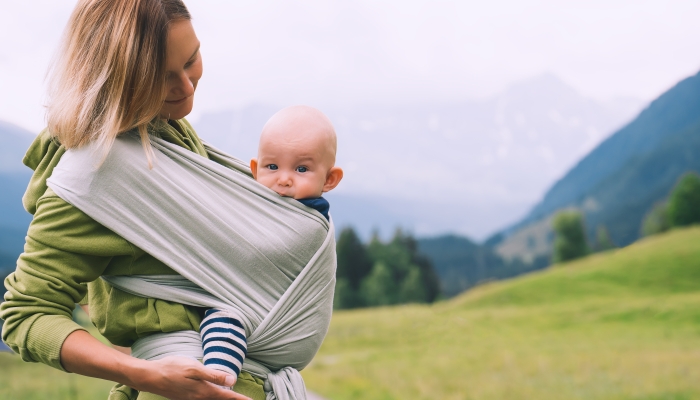
- Babywearing is the perfect way to keep your baby close without hurting your back and still having your hands free to complete tasks.
- When baby carriers are used correctly, the baby’s hips are actually in a great position for healthy hip development.
- Breastfeeding moms will appreciate how easy it is to feed on the go with a baby carrier.
My first baby was especially clingy. From the moment she was born, she loved to be held and bounced. This meant I needed to spend hours a day holding her.
Needless to say, I was sore after only a few days and looking for relief. I wanted to find a way to keep her close while also keeping my hands free. This is when I was introduced to the concept of babywearing.
This idea was entirely new to me, but it wasn’t new to our society. In fact, babywearing has been around since ancient civilizations. Nomadic humans needed easy ways to carry babies from place to place and turned to babywearing as a solution.
In today’s modern world, we can still benefit from babywearing!
There is so much to love about babywearing. If you’re new to the idea and unsure if it’s for you, you’re in the right place. I’ll lay out everything you need to know about babywearing, including the benefits of babywearing that you won’t want to miss.
What Is Babywearing?
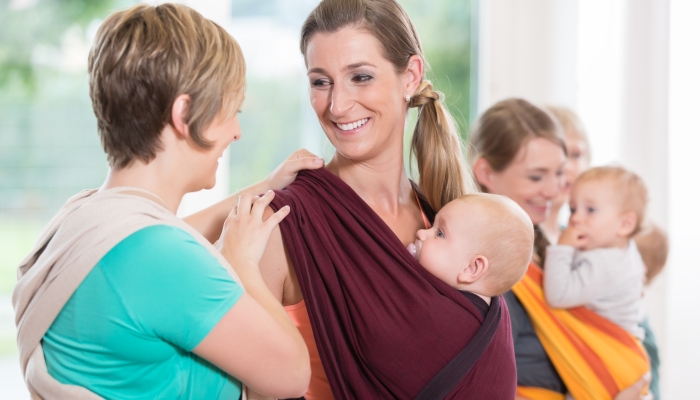
Babywearing refers to carrying your baby in some type of device that keeps your arms free. These devices often keep your baby close to your chest or back. They’re usually securely fastened with wraps, clips, or rings.
Several types of babywearing devices include:
- Ring Slings
- Pouch Slings
- Baby Wrap Carriers
- Soft Structured Carriers
- Backpack Carriers
When Can You Start Babywearing?
One of the best things about babywearing is that you can start right away, even with premature babies. There is nothing more special than getting to snuggle your precious newborn in a baby wrap or other soft carrier. I started wearing all of my babies as soon as we got home from the hospital.
As long as you follow babywearing safety guidelines, your infant will be safe. You can continue babywearing as long as you’d like. Some parents use toddler carriers to continue carrying their children into the toddler years.
What Are the Benefits of Babywearing for Babies?
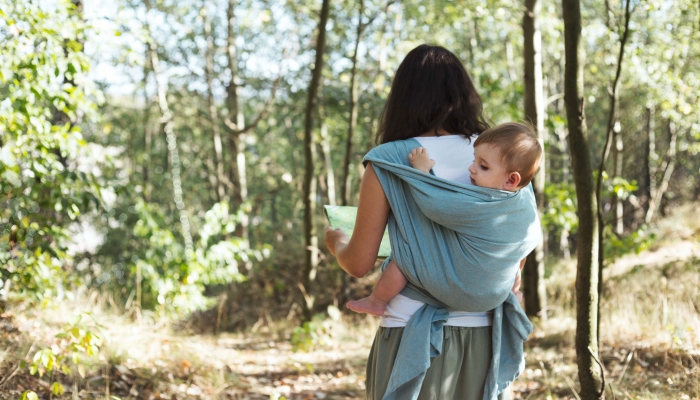
Babies love being held close to mom or dad. Babywearing is the perfect way to keep your baby close without hurting your back or being unable to complete any tasks. While you wear your baby, you’ll be happy to know that they’ll reap the benefits too.
Here are a few benefits your baby will receive during babywearing:
1. Reduces Crying
When your baby is near you, they’ll likely feel calmer. Many parents find that when their babies cry, it’s often because they want to be held.
In a 1986 clinical trial conducted by Hunziker and Barr, published in Pediatrics11. Hunziker, U. A., & Barr, R. G.. Increased carrying reduces infant crying: A randomized controlled trial. Pediatrics. 1986;77(5), 641–648. https://doi.org/10.1542/peds.77.5.641, researchers found that babywearing reduced infant crying by 43% overall and 51% during the evening hours. They concluded that “supplemental carrying modifies ‘normal’ crying by reducing the duration and altering the typical pattern of crying and fussing in the first 3 months of life.”
When your baby cries continually, it can cause stress for both of you. While babywearing may not solve crying in a colicky baby completely, it is likely to help and is worth a try.
2. Helps Hips Develop Properly
Hip dysplasia is a concern among many parents. This occurs when a baby’s hip joints develop incorrectly. Hip dysplasia puts a baby at risk for hip dislocation.
Common causes of hip dysplasia include swaddling too tightly and using an infant carrier incorrectly. However, when you use a baby carrier correctly, your baby’s hips are actually in a great position for healthy hip development. In fact, a 2021 study in the Journal of Orthopedic Research22. Fontecha, C. G., Coma Muñoz, A., & Catala Muñoz, A.. Exploración Ecográfica de las caderas del bebé en mochilas de porteo. Revista Española de Cirugía Ortopédica y Traumatología. 2019;63(4), 289–294. https://doi.org/10.1016/j.recot.2019.02.002 found that baby carriers (especially inward-facing carriers) provide better hip positioning than supine carriers (like car seats).
Correct placement will look like an “M” position. The baby’s bottom is the middle of the M and the baby’s legs are turned out and bent to create the sides of the M.
3. Promotes Healthy Eating
When a baby is turned in facing their mother’s chest, they will also be right next to her breasts. If a baby is breastfed, this will encourage them to feed more often. Babies who are underweight may benefit from being carried in a nursing carrier for convenient, frequent feeding.
4. Comforts Your Baby
When a baby is in the womb, they’re surrounded by the warmth of their mother’s body. In addition to that, they’re comforted by the soothing sounds of their mother’s heartbeat. When a mother wraps her baby close to her chest, the baby is once again surrounded by her warmth and the sound of her heartbeat.
5. Encourages Healthy Sleep
Many parents find their babies sleep best while in a baby wrap against their chest. If you notice that your baby isn’t sleeping well, you might try babywearing for a period to help them sleep more soundly. Sometimes a baby just needs the reassurance that mommy and daddy are near to get a solid nap.
6. Helps Social Development
In contrast to babies who are usually in a pack n’ play or activity seat, infants who are in baby wraps often get more social stimulation. They are close enough to their mom to hear her talk and can see the facial expressions and communications of those she talks to.
7. Helps Prevent Flat Head Syndrome
Flat head syndrome, also known as positional plagiocephaly, usually occurs when a baby’s neck muscles are too tight to allow them to move their head. When lying in bed, they often keep their head in the same position causing a flat head.
According to a 2020 paper on the Diagnosis and treatment of positional plagiocephaly33. Jung, B. K., & Yun, I. S.. Diagnosis and treatment of positional plagiocephaly. Archives of Craniofacial Surgery. 2020;21(2), 80–86. https://doi.org/10.7181/acfs.2020.00059, changing positions is considered an appropriate conservative treatment for flat head treatment. If your baby is carried throughout the day rather than laying down, it will prevent their head from remaining flat against the bed.
What Are the Benefits of Babywearing for Parents?
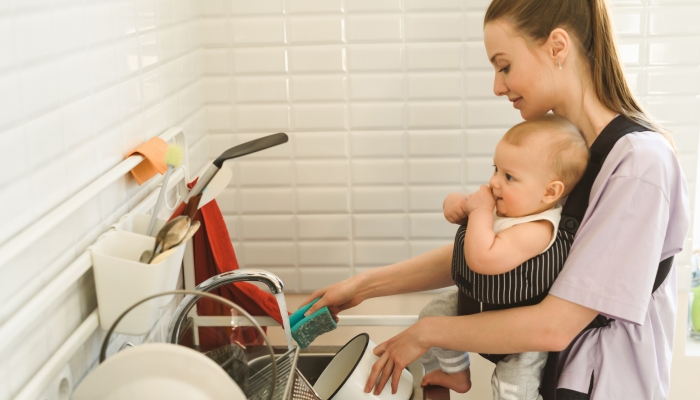
Babies aren’t the only ones who love babywearing. Here are a few benefits that moms and dads will enjoy:
8. Encourages Bond with Baby
Many parents use babywearing as a way to bond with their babies. When babies are held in a carrier, they are close to their parents and become attached to their presence. While babywearing, your baby will likely become very familiar with your smell, voice, breathing patterns, and face.
9. Provides a Hands-Free Hold
One of the best babywearing benefits is the freedom it gives parents. The best baby carriers will allow you to have full movement with your hands and arms while providing a snug and secure hold on your baby so you feel safe moving around.
This freedom will allow you to do laundry, type on the laptop, make a snack, or do other activities. Just be sure to never wear your baby around a hot stove to prevent accidents.
10. Convenient for Nursing
Breastfeeding moms will appreciate how easy it is to feed on the go with a baby carrier. Nursing carriers allow babies to nurse while seated in the carrier. Many of these carriers also include a small head cover for infants that will give moms a little privacy while breastfeeding.
11. Reduces Worry About Germs
This is my secret to taking a newborn to social settings without worrying about germs. When I keep my baby close to my chest, tucked in a wrap, no one can grab their little hands or kiss their cheeks. This can be very helpful in situations where everyone is eager to see and hold the baby.
5 Safety Tips When Babywearing
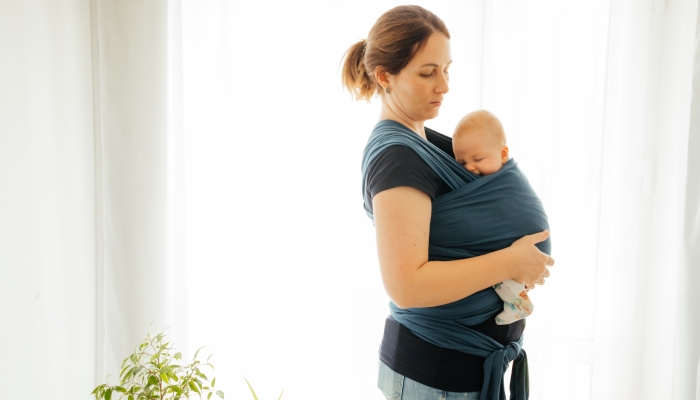
Baby-wearing is completely safe as long as you follow the instructions for your baby carrier. In addition, follow these safety guidelines to keep your baby out of harm’s way:
- Monitor your baby’s temperature. If you dress your baby appropriately, they shouldn’t be at risk for overheating. However, it’s always a good idea to check their body to be sure they aren’t sweating while in the carrier.
- Keep your baby upright. Make sure your baby’s back and bottom are supported so your baby stays in an upright position. Keep your baby from slouching down in the carrier so they can breathe properly.
- Avoid covering your baby’s face. Keep your baby’s face free of all material to ensure they aren’t in danger of suffocation. Any extra covers should be used according to the manufacturer’s directions.
- Keep your baby facing inward. Your baby’s head should face inward, towards your chest, until they have good neck control. Facing your baby outward could cause your baby’s chin to tilt forward and cut off their air supply.
- Stay away from hazardous situations. Don’t attempt to cook, cut with a knife, or drink hot beverages while wearing your baby. One small slip could put your baby in danger.
FAQs
Is babywearing safe for an infant who has medical conditions or special needs?
Yes, you can! There are many benefits of skin-to-skin contact for babies with special needs. Babywearing is a great way to squeeze in more skin-to-skin time with your special needs little one.
Are there any babywearing techniques or tips to make it more comfortable for me and my baby?
A baby carrier should always distribute the weight evenly on your back and shoulders. If you find a good fit for your body, you’ll be able to carry your baby for several hours without pain. A soft wrap baby carrier that crosses over your back may be one of the best baby carriers for back pain.
I recommend trying out a few types of baby carriers before purchasing to see which type is most comfortable for you. Every parent will have different needs according to their body type and the weight of the child.
For example, some of the best baby carriers for plus-size moms will have comfortable, stretchy fabric and adjustable straps. Baby carriers with buckles around the waist are usually sturdier and more comfortable for carrying older babies.
How long can I comfortably wear my baby in a carrier at a time?
You can safely and comfortably wear your baby for as long as your baby tolerates it. As long as your baby is positioned correctly and staying cool, they’re aren’t many risks to wearing for a long period during the day.
If you notice your baby is fussy in the carrier, take them out and give them a break. Just like adults, your baby will want to change positions and move around.
Does infant carrying promote attachment to dads as well?
Yes, infant carrying is a great way for a dad to get skin-to-skin contact with the baby. Oftentimes, the mother spends more time holding the baby in the early days of infancy. When you give dad a baby carrier to use, it will help him feel connected and involved in the infant’s life.
References
- Hunziker, U. A., & Barr, R. G. (1986). Increased carrying reduces infant crying: A randomized controlled trial. Pediatrics, 77(5), 641–648. https://doi.org/10.1542/peds.77.5.641
- Fontecha, C. G., Coma Muñoz, A., & Catala Muñoz, A. (2019). Exploración Ecográfica de las caderas del bebé en mochilas de porteo. Revista Española de Cirugía Ortopédica y Traumatología, 63(4), 289–294. https://doi.org/10.1016/j.recot.2019.02.002
- Jung, B. K., & Yun, I. S. (2020). Diagnosis and treatment of positional plagiocephaly. Archives of Craniofacial Surgery, 21(2), 80–86. https://doi.org/10.7181/acfs.2020.00059
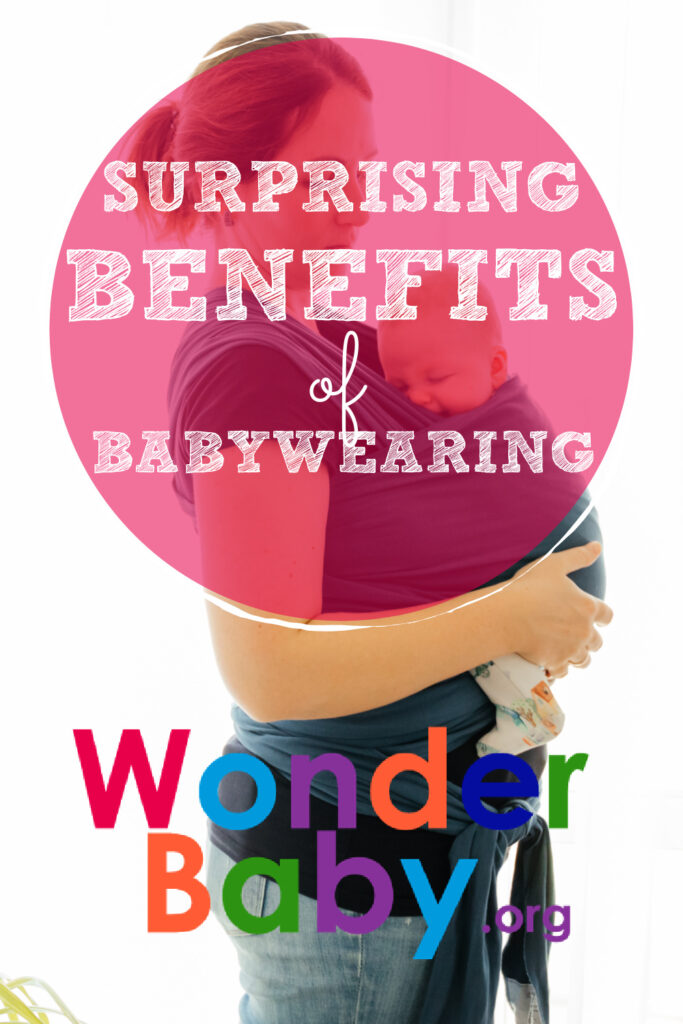
Related Posts
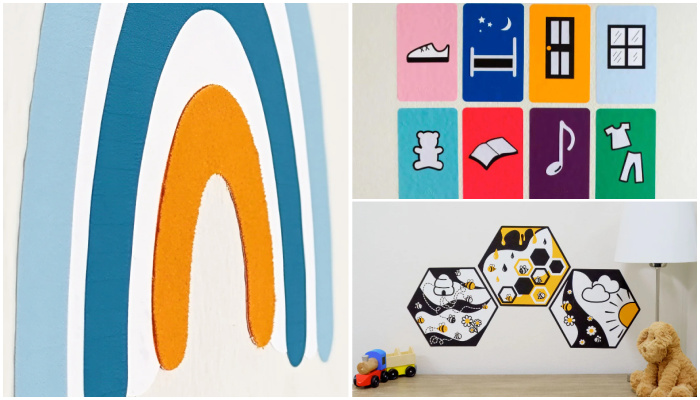
Parenting
Sensory Wall Art: 5 Tips to Create a Room Your Blind or Low-Vision Child Will Love
Even if your child can’t see their surroundings, personalizing and decorating their room with thoughtful, sensory-friendly design can make a big difference in their confidence, independence, and joy.
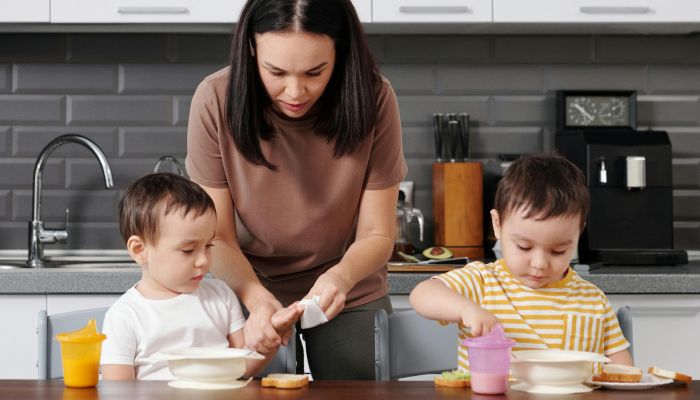
Parenting
4 Tips to Manage Twins Alone as a Single Parent
Taking care of twins alone as a single parent can feel overwhelming. Learn practical ways to help lighten the load.

Parenting
How to Manage Twin Escalation Syndrome
Discover effective strategies for managing twin escalation syndrome, including promoting individuality and fostering positive interactions.